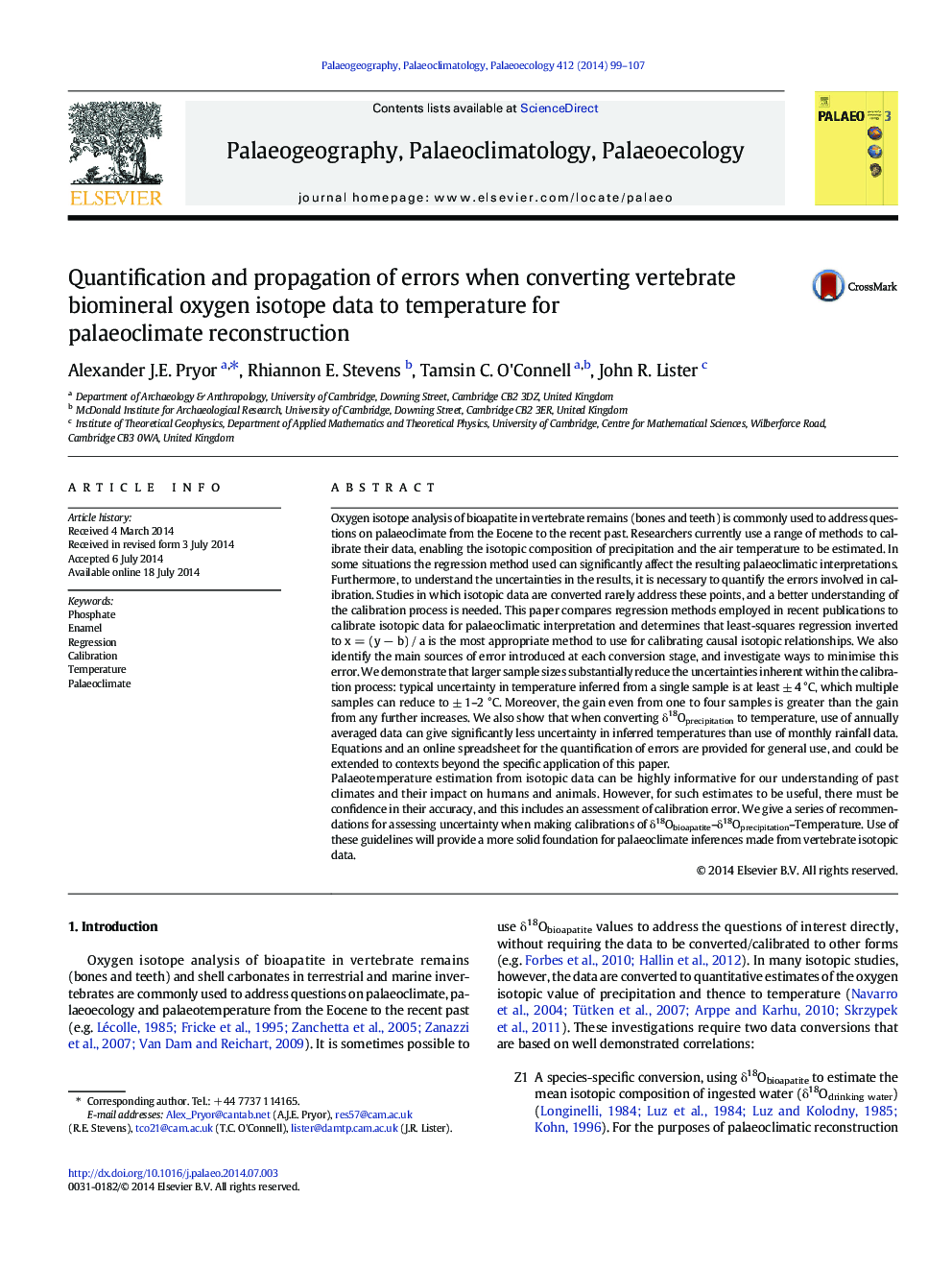| کد مقاله | کد نشریه | سال انتشار | مقاله انگلیسی | نسخه تمام متن |
|---|---|---|---|---|
| 4466191 | 1622178 | 2014 | 9 صفحه PDF | دانلود رایگان |
• The statistical errors in converting isotope data to palaeotemperature are analysed.
• Appropriate methods, and equations with supporting spreadsheet, are presented.
• Transposed regression underestimates temperature differences by at least 40%.
• Increasing sample size from 1 to 5 gives big improvements, more than 5 less so.
• Uncertainty from natural faunal variability dominates that from precipitation data.
Oxygen isotope analysis of bioapatite in vertebrate remains (bones and teeth) is commonly used to address questions on palaeoclimate from the Eocene to the recent past. Researchers currently use a range of methods to calibrate their data, enabling the isotopic composition of precipitation and the air temperature to be estimated. In some situations the regression method used can significantly affect the resulting palaeoclimatic interpretations. Furthermore, to understand the uncertainties in the results, it is necessary to quantify the errors involved in calibration. Studies in which isotopic data are converted rarely address these points, and a better understanding of the calibration process is needed. This paper compares regression methods employed in recent publications to calibrate isotopic data for palaeoclimatic interpretation and determines that least-squares regression inverted to x = (y − b) / a is the most appropriate method to use for calibrating causal isotopic relationships. We also identify the main sources of error introduced at each conversion stage, and investigate ways to minimise this error. We demonstrate that larger sample sizes substantially reduce the uncertainties inherent within the calibration process: typical uncertainty in temperature inferred from a single sample is at least ± 4 °C, which multiple samples can reduce to ± 1–2 °C. Moreover, the gain even from one to four samples is greater than the gain from any further increases. We also show that when converting δ18Oprecipitation to temperature, use of annually averaged data can give significantly less uncertainty in inferred temperatures than use of monthly rainfall data. Equations and an online spreadsheet for the quantification of errors are provided for general use, and could be extended to contexts beyond the specific application of this paper.Palaeotemperature estimation from isotopic data can be highly informative for our understanding of past climates and their impact on humans and animals. However, for such estimates to be useful, there must be confidence in their accuracy, and this includes an assessment of calibration error. We give a series of recommendations for assessing uncertainty when making calibrations of δ18Obioapatite–δ18Oprecipitation–Temperature. Use of these guidelines will provide a more solid foundation for palaeoclimate inferences made from vertebrate isotopic data.
Journal: Palaeogeography, Palaeoclimatology, Palaeoecology - Volume 412, 15 October 2014, Pages 99–107
